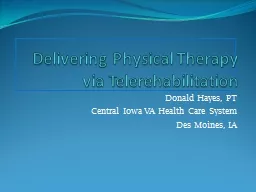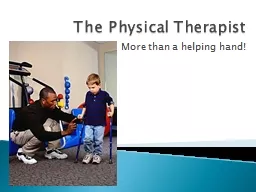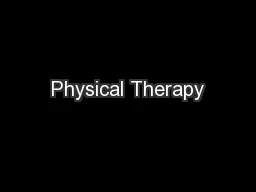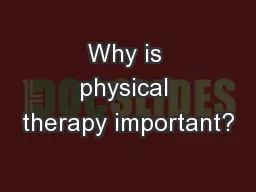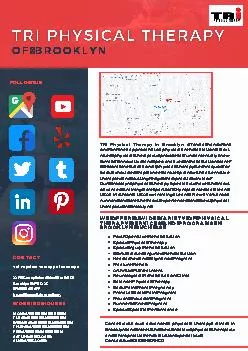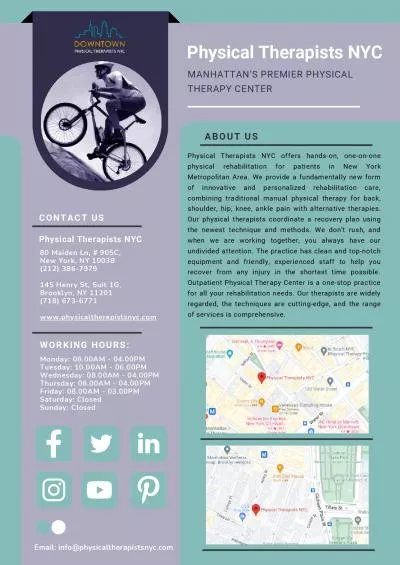PPT-Delivering Physical Therapy via
Author : tatiana-dople | Published Date : 2019-12-25
Delivering Physical Therapy via Telerehabilitation Donald Hayes PT Central Iowa VA Health Care System Des Moines IA Goal of Telehealth Increase access for patients
Presentation Embed Code
Download Presentation
Download Presentation The PPT/PDF document "Delivering Physical Therapy via" is the property of its rightful owner. Permission is granted to download and print the materials on this website for personal, non-commercial use only, and to display it on your personal computer provided you do not modify the materials and that you retain all copyright notices contained in the materials. By downloading content from our website, you accept the terms of this agreement.
Delivering Physical Therapy via: Transcript
Download Rules Of Document
"Delivering Physical Therapy via"The content belongs to its owner. You may download and print it for personal use, without modification, and keep all copyright notices. By downloading, you agree to these terms.
Related Documents

